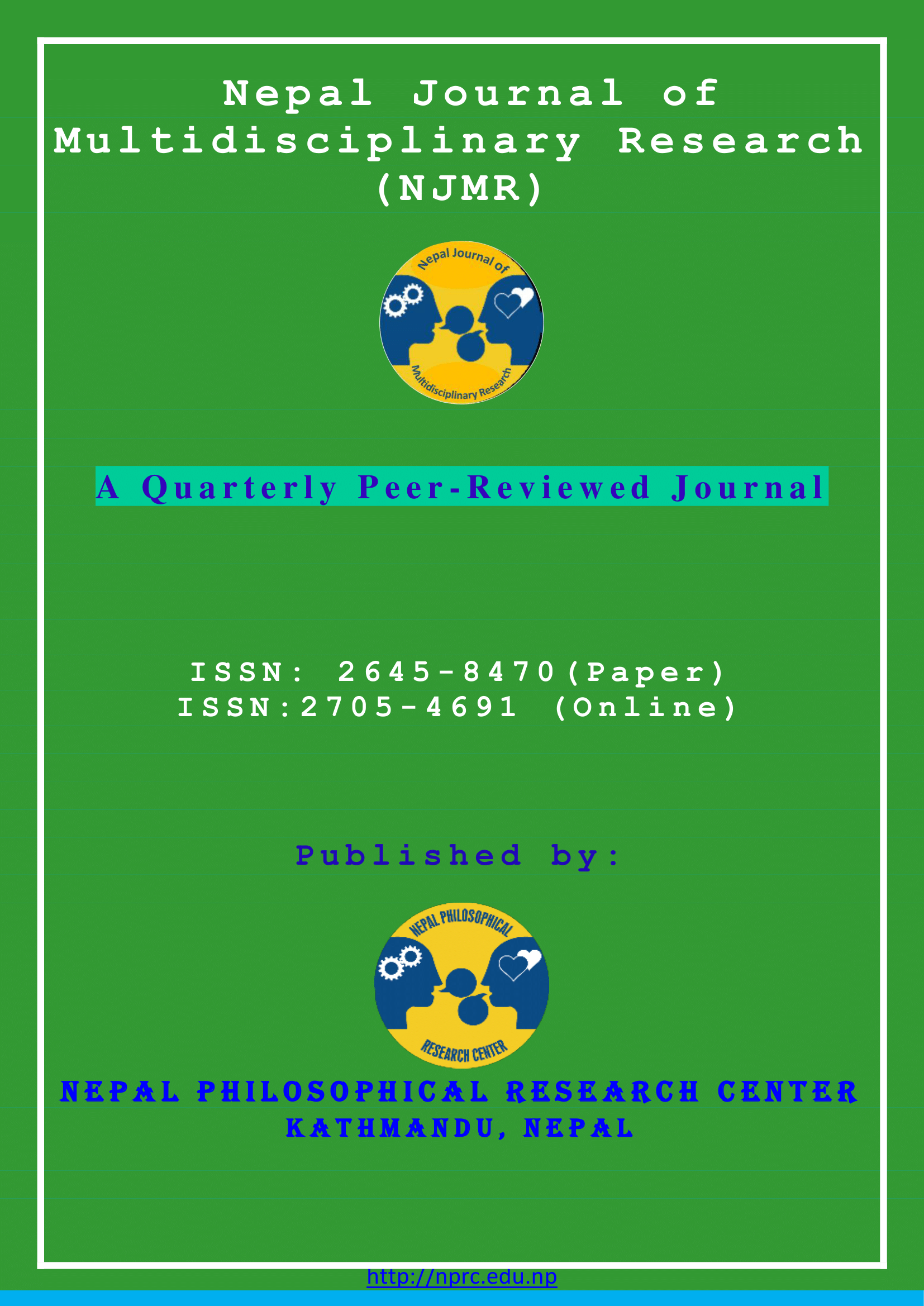A Class Struggle in Umberto’s Boccioni’s Painting- Street Noises Invade the House (1911)
DOI:
https://doi.org/10.3126/njmr.v5i1.44611Keywords:
impressionists, dynamism, futurism, formal elements, class struggleAbstract
The modern art of the early twentieth century is the reaction to Realism, and impressionists were the first who broke away from so called rule bound represented bourgeoisie. That is to say that they are the harbingers of the twentieth century art. As Europe was shifting swiftly with the new things being built, the impressionists were changing the whole concept in the art with an attempt to avoid myths and history in painting and developed a new perspective to look at the painting and do it as it is for anyone. This avant-garde art has brought about symbolism, cubism, fauvism and futurism. It has also put the dimension of art and painting in a new mode of representation. Futurism embraces the chaos of the advances in technology with the features like dynamism, speed, energy, vitality and change as an inspiring way to reject the tradition and face the future. Against this backdrop, this paper examines how futurism, an artistic mode of representation has situated the context of art into a social change in Umberto Boccioni’s painting- Street Noises Invade the House (1911) vis-a-vis the Marxist approach of class struggle. In addition, the paper also analyzes the formal elements- color, structure, balance and harmony employed in the art by the artist that constitute the composite whole.
Downloads
Downloads
Published
How to Cite
Issue
Section
License
Copyright (c) 2022 Tek Bahadur Chhetry

This work is licensed under a Creative Commons Attribution-NonCommercial 4.0 International License.
This license enables reusers to distribute, remix, adapt, and build upon the material in any medium or format for noncommercial purposes only, and only so long as attribution is given to the creator.




